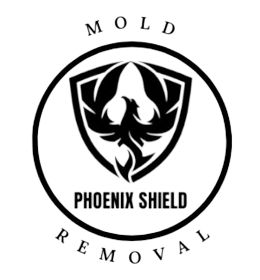Mold is a common concern for homeowners, and understanding its fundamentals is crucial for maintaining a safe and healthy living environment. In this guide, we’ll delve into the basics of mold, its causes, its potential impact on homes, common types of mold, and the associated health risks. By the end of this article, you’ll have a better grasp of mold-related issues and how to address them effectively.
What Is Mold?
Mold is a type of fungus that exists naturally in our environment. It plays a vital role in breaking down organic matter, such as dead leaves and fallen trees, by decomposing it. However, when mold finds its way indoors and starts growing within your home, it can become a significant problem.
Common Causes of Mold Growth
Mold thrives in environments with moisture and organic materials to feed on. Here are some common causes of mold growth in homes:
- Water Leaks: Any form of water intrusion, from leaky roofs to plumbing issues, can create the damp conditions mold needs to grow.
- High Humidity: Areas with consistently high humidity levels, such as bathrooms and basements, are more prone to mold growth.
- Poor Ventilation: Inadequate ventilation can trap moisture indoors, contributing to mold issues.
- Condensation: Condensation on windows, walls, or pipes can provide the moisture needed for mold to flourish.
Potential Impact on Homes
Mold can have several adverse effects on your home:
- Structural Damage: Over time, mold growth can weaken and compromise the structural integrity of your home, especially if it infiltrates building materials like wood and drywall.
- Property Value: Mold issues can lower the resale value of your home, making it harder to sell in the future.
- Health Concerns: Mold can produce allergens, irritants, and mycotoxins that, when inhaled or touched, may lead to health problems, especially for individuals with allergies, asthma, or weakened immune systems.
Common Types of Mold
There are many types of mold, but a few are commonly found indoors. These include:
- Cladosporium: This green or black mold is often found on fabrics, carpets, and wood surfaces.
- Penicillium: Recognizable by its blue or green appearance, Penicillium can grow on materials like wallpaper and insulation.
- Aspergillus: Aspergillus is yellow-green and can colonize on dusty, dry surfaces.
- Stachybotrys Chartarum (Black Mold): Known for its slimy, greenish-black appearance, black mold is infamous for producing mycotoxins, which can pose health risks.
Health Risks Associated with Mold
Exposure to mold can lead to various health concerns, including:
- Respiratory Issues: Mold spores can trigger coughing, sneezing, congestion, and aggravated asthma symptoms.
- Allergies: Mold allergens can cause allergic reactions, including runny noses, itchy eyes, and skin rashes.
- Mycotoxins: Some molds, like black mold, produce mycotoxins that can result in more severe health issues, including fatigue, headaches, and respiratory problems.
In conclusion, mold is a potential threat to your home and health. To prevent and address mold issues effectively, it’s essential to control moisture, ensure proper ventilation, and promptly address any water leaks or areas of concern. If you suspect mold growth in your home, consult with a professional mold removal service like Phoenix Shield Mold Removal to assess the situation and provide expert guidance on mold remediation.
By being informed about mold and its potential impact, homeowners can take proactive steps to protect their homes and loved ones from the adverse effects of mold growth.

